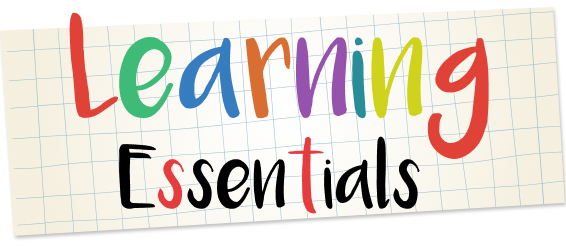
Animals Essential Activities for Kindergarten
Videos
(1/5)
Baa, Baa, Black Sheep | Song
Get the most for your kids with the new animated version of the Baa Baa Black Sheep song by Kids Academy! The traditional nursery rhyme Baa Baa Black Sheep dates back to the middle of the 18th century and was sung by our great-great-great grandparents and it hasn’t t significantly changed since then. Your little ones are sure to enjoy listening to fascinating stories about the lives of our ancestors or you can ask the kids to tell you how they imagine a life two and a half centuries ago. The video is a karaoke version and has Baa Baa Blaa Sheep lyrics embedded in it. As the rhyme has a very catchy tune and the words to Baa Baa Black Sheep song are easy to remember, young learners adore listening to it and start singing to the video in no time. Add clapping and tapping to get more joy and excitement. Nursery rhymes are perfect for teaching rhythm and rhyming and Baa Baa Black Sheep song is not an exception. Furthermore, it is perfect for pronunciation practice as kids pronounce the word ‘sheep’ hundreds of times. Also, use it to revise the sounds various animals produce. Watching the video can turn not only into a nice reading activity where kids learn to recognize and read the lyrics to Baa Baa Black Sheep, but can also be a nice opportunity to practice counting to three: ask your kids to show three fingers and then fold them as the song goes by. This will definitely benefit kids’ motor skills developing. Don’t miss a chance to entertain and educate kids with the professionally created video on the Baa Baa Black Sheep rhyme! Lyrics: Baa, baa, black sheep, Have you any wool? Yes sir, yes sir, Three bags full. One for the master, One for the dame, One for the little boy Who lives down the lane. Baa, baa, white sheep, Have you any wool? Yes sir, yes sir, Three bags full. One for the master, One for the dame, And one for the little boy Who lives down the lane. Baa, baa, brown sheep, Have you any wool? Yes sir, yes sir, Three bags full. One for the master, One for the dame, And one for the little boy Who lives down the lane.
"Itsy Bitsy Spider" (also known as "Incy Wincy Spider") and several other similar-sounding names) is a popular nursery rhyme and fingerplay that describes the adventures of a spider as it ascends, descends, and reascends the downspout or "waterspout" of a gutter system. It is usually accompanied by a sequence of gestures that mimic the words of the song. LYRICS: The itsy bitsy spider climbed up the waterspout. Down came the rain and washed the spider out. Out came the sun and dried up all the rain and the itsy bitsy spider climbed up the spout again. x4 FINGERPLAY: Alternately touch the thumb of one hand to the index finger of the other. Hold both hands up and wiggle the fingers as the hands are lowered. Sweep the hands from side to side. Raise both hands and sweep to the sides to form a semicircle as the sun. Wiggle fingers upwards. (as in the first line)
Old MacDonald Had a Farm is a popular nursery rhyme and kids’ favorite song about the farmer who keeps different animals on his farm. Old MacDonald song includes 5-6 verses, each related to a specific animal and its respective noise. Kids will be delighted to imitate sounds, while learning all the farm animals with this fun, lively Old MacDonald video. Lyrics: Old MacDonald had a farm, ee-i-ee-i-o, And on his farm he had a duck, ee-i-ee-i-o. With a quack quack here and a quack quack there, Here a quack, there a quack, everywhere a quack quack. Old MacDonald had a farm, ee-i-ee-i-o. Old MacDonald had a farm, ee-i-ee-i-o, And on his farm he had a cow, ee-i-ee-i-o. With a moo moo here and a moo moo there, Here a moo, there a moo, everywhere a moo moo. Old MacDonald had a farm, ee-i-ee-i-o. Old MacDonald had a farm, ee-i-ee-i-o, And on his farm he had a sheep, ee-i-ee-i-o. With a baa baa here and a baa baa there, Here a baa, there a baa, everywhere a baa baa. Old MacDonald had a farm, ee-i-ee-i-o. Old MacDonald had a farm, ee-i-ee-i-o, And on his farm he had a horse, ee-i-ee-i-o. With a neh neh here and a neh neh there, Here a neh, there a neh, everywhere a neh neh. Old MacDonald had a farm, ee-i-ee-i-o. Old MacDonald had a farm, ee-i-ee-i-o, And on his farm he had some chickens, ee-i-ee-i-o. With a cluck cluck here and a cluck cluck there, Here a cluck, there a cluck, everywhere a cluck cluck. Old MacDonald had a farm, ee-i-ee-i-o.
Ants go marching is a very popular and very fun song for kids to learn numbers. It has a great rhythm to it and the lyrics to his kids’ song are also very interesting. This song is very effective for making the counting easy for the kids. It is great for young toddlers who are just beginning their math lessons and since numbers are the basic of math it is better to make this lesson a little more interesting for the kids.It is a well-known fact that it is easier to remember things which are in rhythm which is why songs remain in our memories even after years. Kids learn fast when things are in rhythm. Also, the animations of these kids are also very interesting and colorful. So, when the kids listen to this song with its video, he/she will be singing the song very soon and without even knowing they would have learned the counting till 10.
It has been suggested that the song may have originally arisen out of American minstrelsy. The earliest printing of the song is from 1852 when the lyrics were published with similar lyrics to those used today, but with a very different tune. It was reprinted again two years later with the same lyrics and another tune. The modern tune was first recorded with the lyrics in 1881, mentioning Eliphalet Oram Lyte in The Franklin Square Song Collection but not making it clear whether he was the composer or adapter.
Worksheets
(1/10)
A Fox and Bird Coloring Page
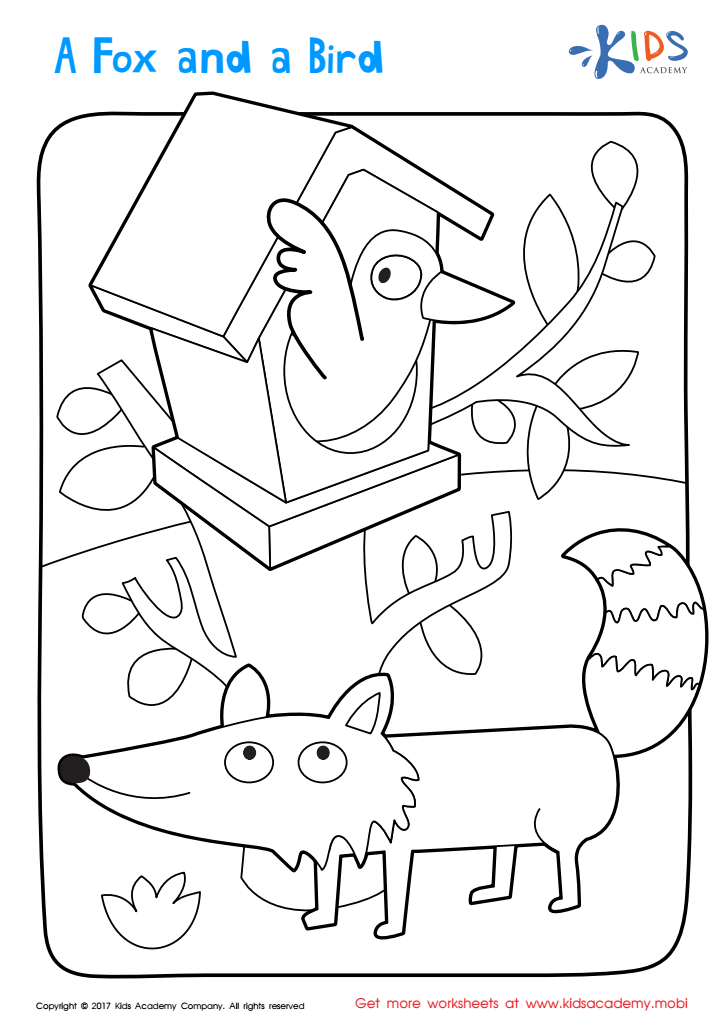
Flex your child’s creativity with this fun-filled coloring page: A Fox and Bird! While coloring, kids express themselves using the colors they choose, giving them the autonomy to make each scene they color their very own.
This adorable picture will bring joy to your child’s art routine!
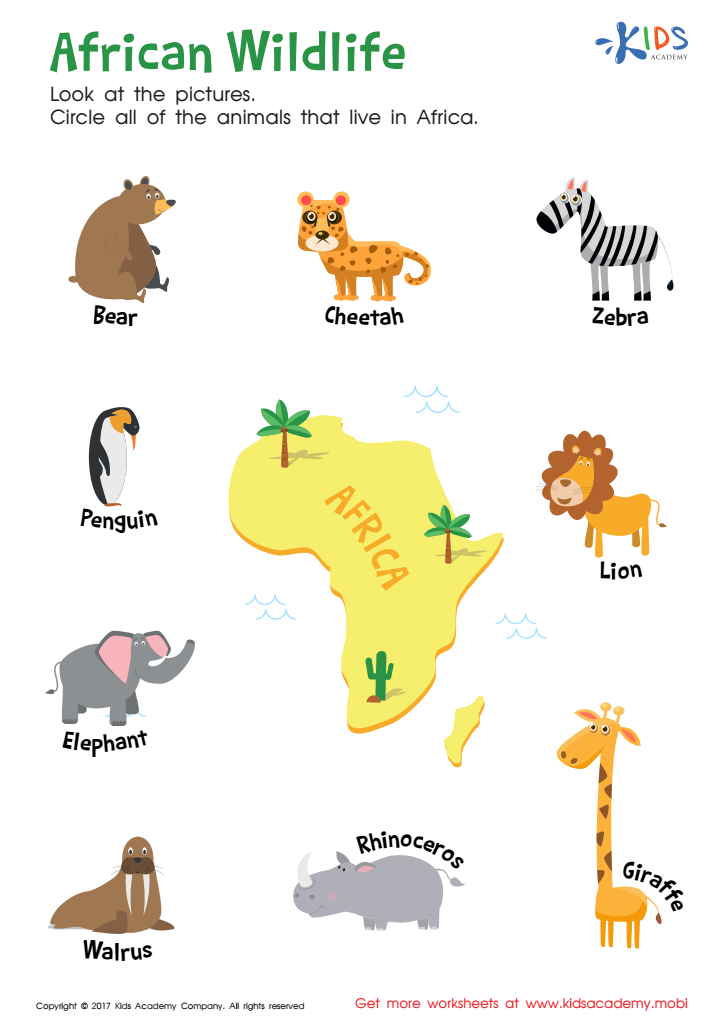
Teach your child about a world beyond his reach with this bright and colorful African wildlife printable worksheet! Your child will recall and learn about animals to practice essential categorization skills, all while they are enticed by cute and cuddly animal images!
Here’s why this worksheet is great:
• Your child will practice recalling important information about animals to find the right answer
• This helps kids to lay a foundation for classifying different types of animals.
Help your child build an expansive knowledge of the world around them by introducing early science concepts like wildlife, habitats, and climate. Our kids are always learning, so use this worksheet to jumpstart a love and appreciation for science, all while honing important categorization skills!
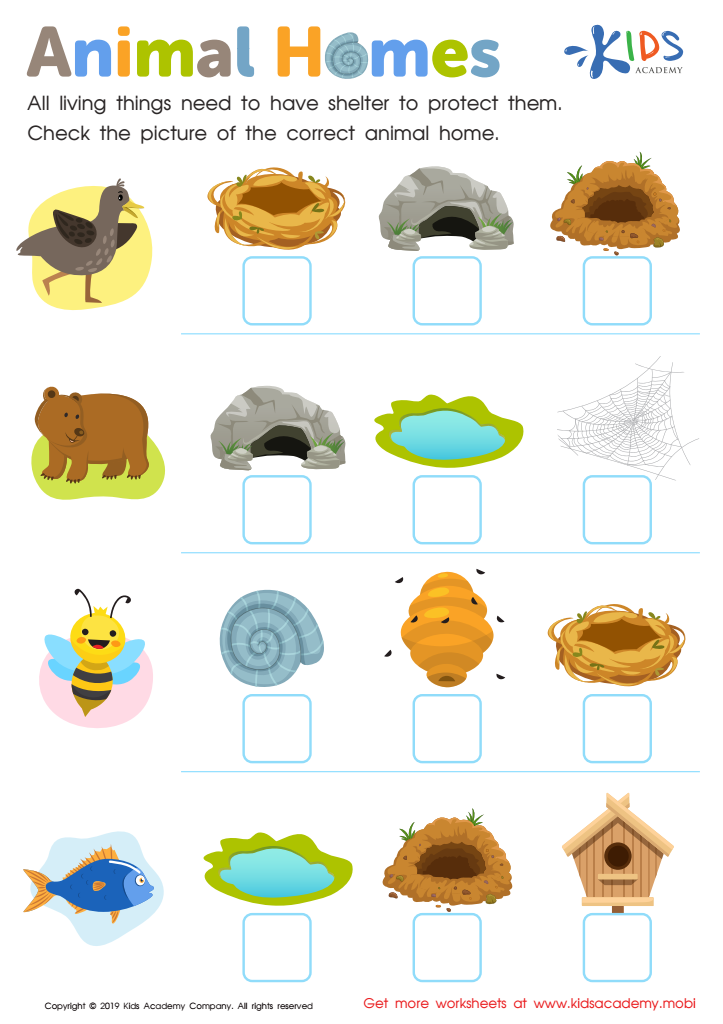
Just like your students have homes where they do all of the things they love and they sleep at night, most living things also have their own homes. Ask your students what some of the things are that make their homes special. Remind them that they eat at home, sleep, and are protected from the harsh weather outside. Now, look at this worksheet. The animals here also have shelters to protect them. Ask your kids to identify each of the living things, and then check the picture that shows the correct animal home.
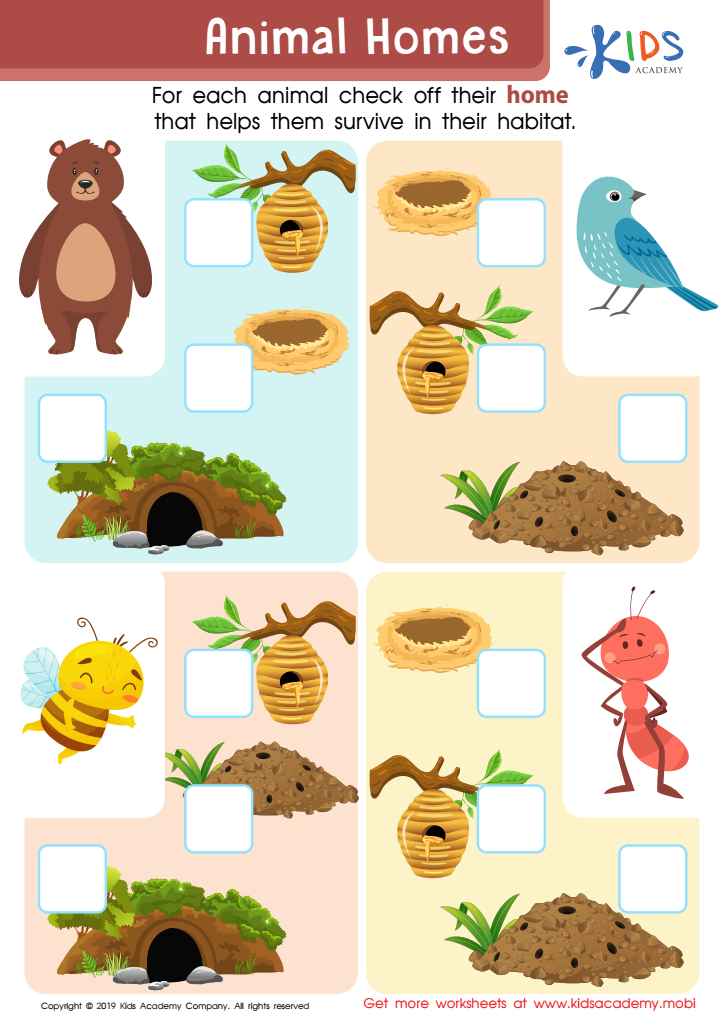
Your students come to school every day to learn, and while they are in school, it is your duty as their teacher to protect, direct, and guide them. However, after school closes, they head back each to their respective homes. Ask your kindergartners if they know what a home means, and why there is special to them. Then, teach them with this worksheet that not only people, but animals also have homes. Look at the pictures shown, and help your students check off the home for each animal living in its habitat.
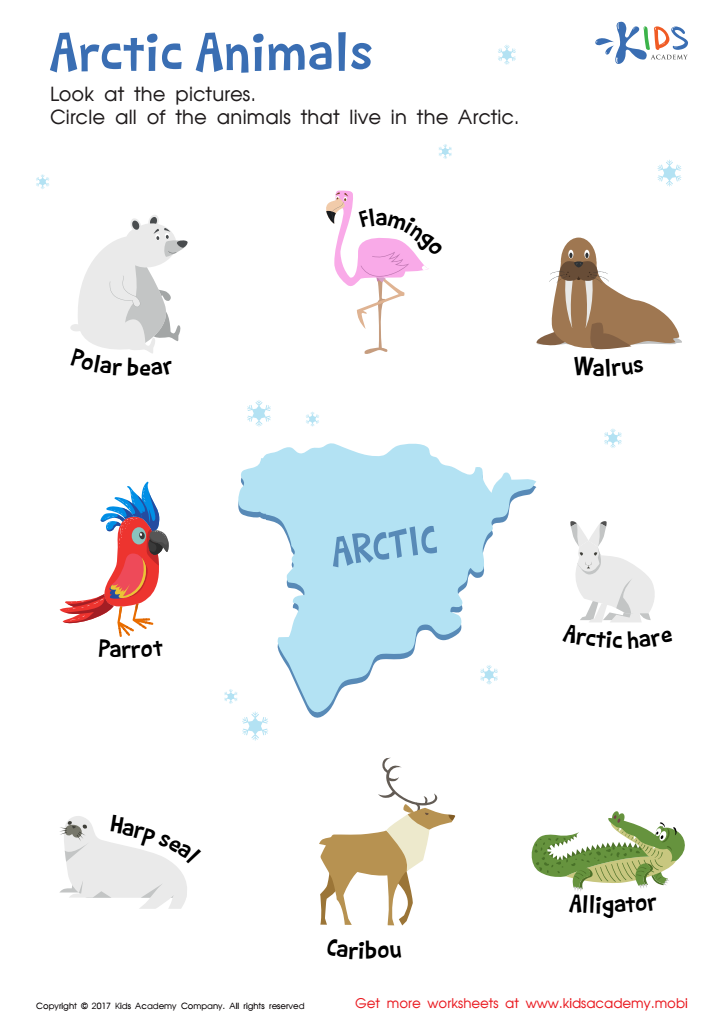
All kids love animals, but does your child know where they live? Step up your child’s science knowledge by teaching him where in the world animals live. This arctic animals worksheet will help your child learn to categorize some favorite animals, while teaching vocabulary for new animals, as well.
Why you’ll love this worksheet:
• It reinforces important classification skills
• You can use it to discuss the habitat of these fascinating animals
• It introduces animals that may be new to your child, like the arctic hare.
Use this worksheet to expand your child’s horizons; talk about the arctic, its climate, and how these animals live, which makes them very different from other animals. When you’re finished, ask your child where the other animals on the page live to keep the conversation going!

Farmers are very important members of society. They grow food and crops which we eat, and also raise animals whose produce we use. Farms are also fun places to be. If your kids have ever been to a farm, ask them if they can remember some of their favorite activities. Now, look at this worksheet. Ask your kids to identify the animals. Help them count the animals in each group, and then circle the correct number.

How well does your child love animals? If you have pets at home, they will be able to relate fully with the text in this worksheet and enjoy completing this exercise. The dog and cat in this printout live on a farm. Read the text aloud to your child carefully, and then ask them to read it aloud to you, if they can read. At the end of the short story, help your child read the simple questions and then answer the questions by circling yes or no.
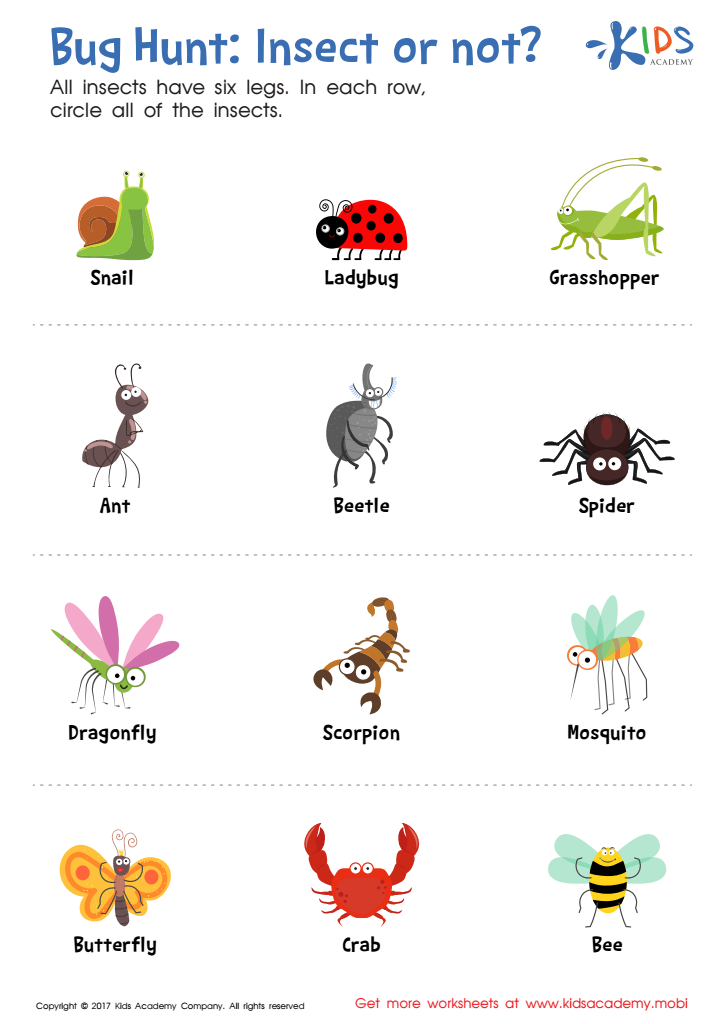
Time to take your child on a hunting adventure! This worksheet, “Bug Hunt: Insect or Not?” will captivate your child as they search for insects on a page jam-packed with creepy crawlies! Most kids think that spiders are bugs, but they’re not! Teach your child the difference with this eye-catching bug worksheet!
Here’s what makes this worksheet great:
• Your child will learn and sharpen advanced science knowledge
• It helps your child to recognize and classify different types of bug-like creatures
• Your child will use advanced problem solving and cognitive skills to solve.
Fascinate your child with the wide world of bugs, and teach them to understand the difference between their favorite creepy crawlies! Talk about the difference between different organisms and lay a foundation for future science success!
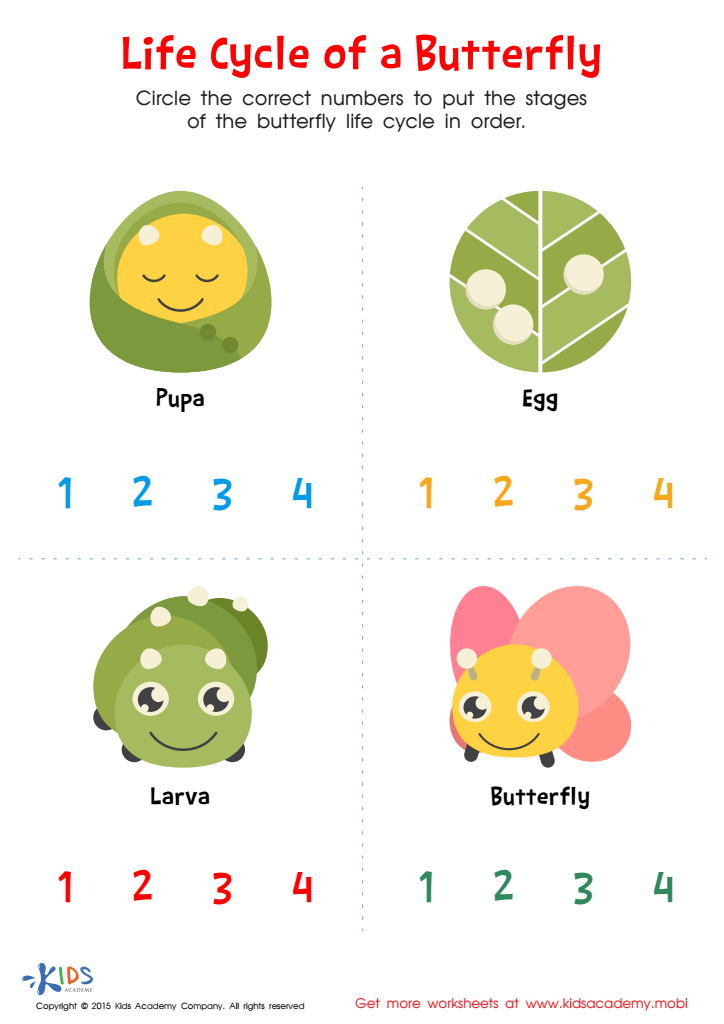
From nursery decorations to butterfly houses, kids and grownups alike marvel at the beauty of butterflies. What’s even more fascinating is the process they take to become the beautiful insects we love to look at! Here’s an adorable butterfly life cycle printable worksheet, perfect for reviewing with your child the magic behind one of their favorite insects!
While completing this worksheet, your child will work on:
• Understanding the process a butterfly goes through to become a butterfly
• Ordering the stages with the correct sequence, from egg to butterfly
• Strengthening cognitive and problem solving skills.
What makes this worksheet tricky is that since the stages are out of order, your child will have to come up with the best strategy to solve it. Guide your child as they work, and they will be working on multiple complex learning skills, all at once!
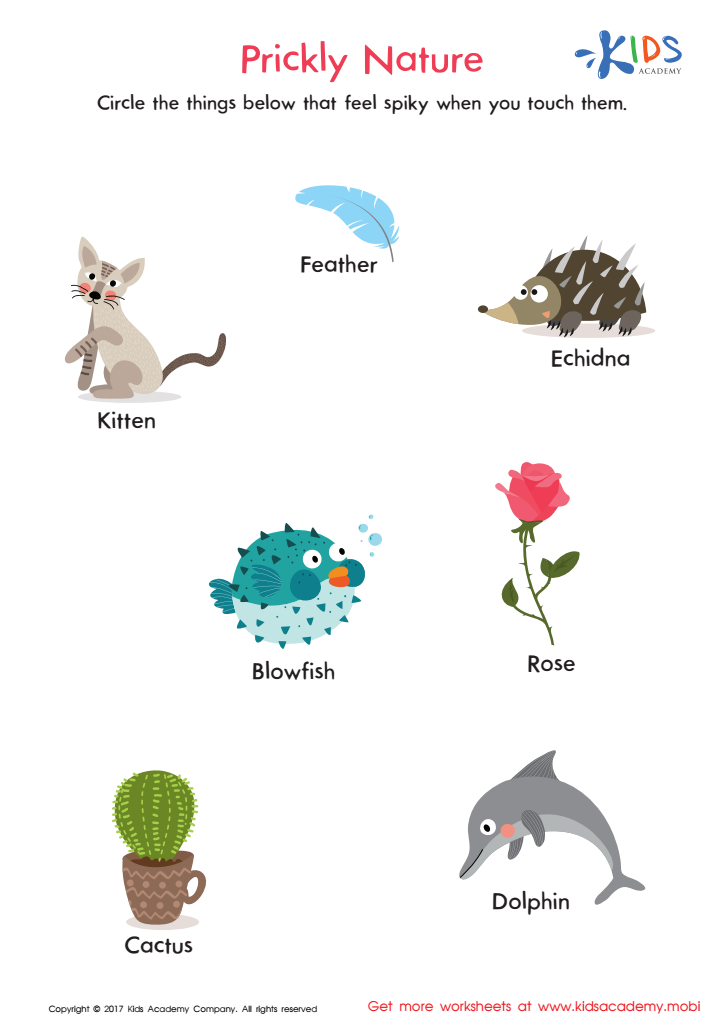
Ouch, that hurts! Things that are spiky sure can pinch! Teach your child about important textures—and how to admire them and avoid them—with this prickly nature printable worksheet.
This worksheet will help your child:
• Recognize objects, plants, and animals that are prickly or spiky
• Differentiate between things that are prickly and soft to the touch
• Sharpen critical thinking and problem solving skills
Teaching kids about their sense of touch helps to keep them safe. Use this worksheet to get started, and then you’re your child recognize prickly objects in your environment!
